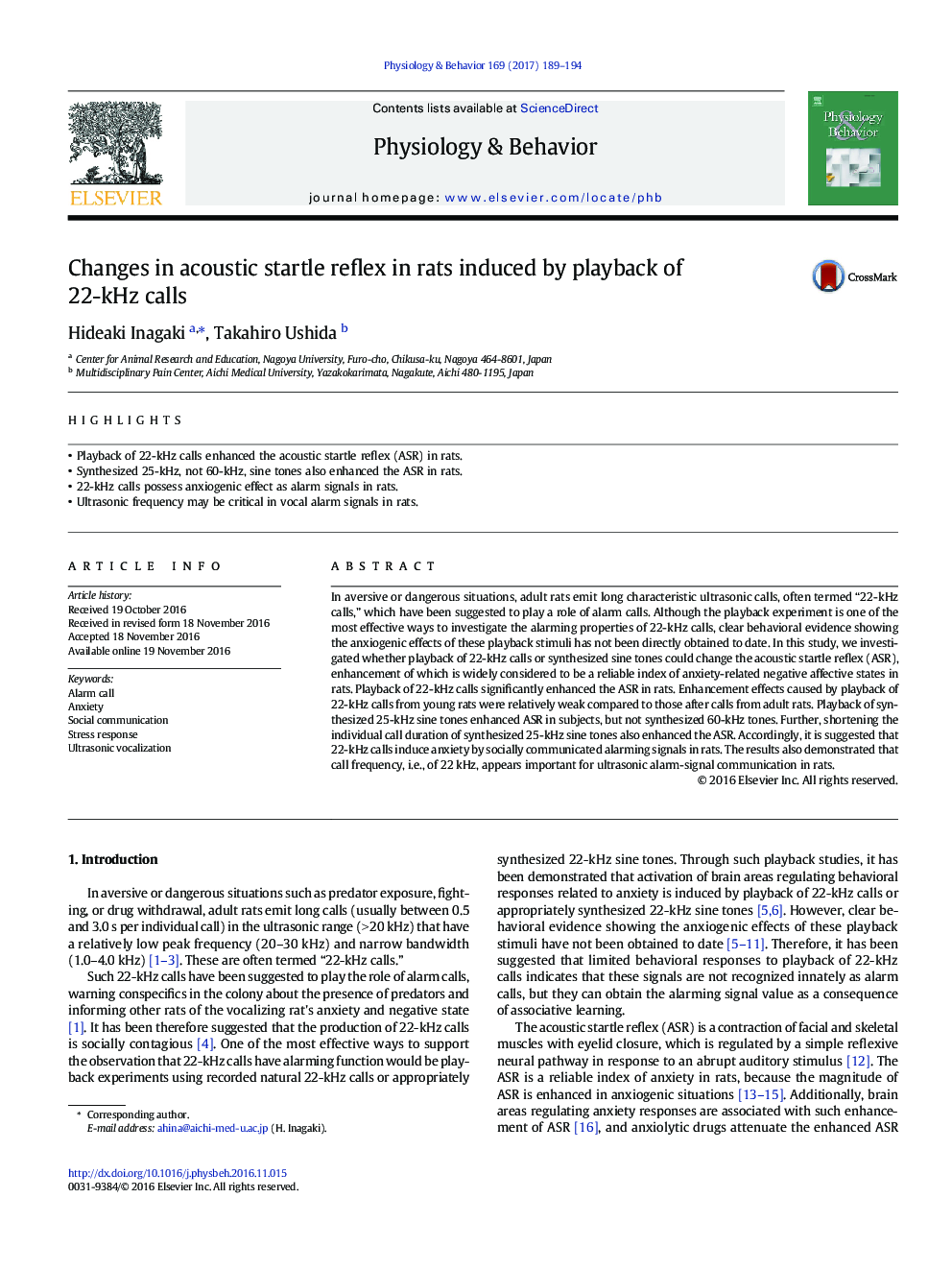| Article ID | Journal | Published Year | Pages | File Type |
|---|---|---|---|---|
| 5594010 | Physiology & Behavior | 2017 | 6 Pages |
Abstract
In aversive or dangerous situations, adult rats emit long characteristic ultrasonic calls, often termed “22-kHz calls,” which have been suggested to play a role of alarm calls. Although the playback experiment is one of the most effective ways to investigate the alarming properties of 22-kHz calls, clear behavioral evidence showing the anxiogenic effects of these playback stimuli has not been directly obtained to date. In this study, we investigated whether playback of 22-kHz calls or synthesized sine tones could change the acoustic startle reflex (ASR), enhancement of which is widely considered to be a reliable index of anxiety-related negative affective states in rats. Playback of 22-kHz calls significantly enhanced the ASR in rats. Enhancement effects caused by playback of 22-kHz calls from young rats were relatively weak compared to those after calls from adult rats. Playback of synthesized 25-kHz sine tones enhanced ASR in subjects, but not synthesized 60-kHz tones. Further, shortening the individual call duration of synthesized 25-kHz sine tones also enhanced the ASR. Accordingly, it is suggested that 22-kHz calls induce anxiety by socially communicated alarming signals in rats. The results also demonstrated that call frequency, i.e., of 22Â kHz, appears important for ultrasonic alarm-signal communication in rats.
Related Topics
Life Sciences
Biochemistry, Genetics and Molecular Biology
Physiology
Authors
Hideaki Inagaki, Takahiro Ushida,
